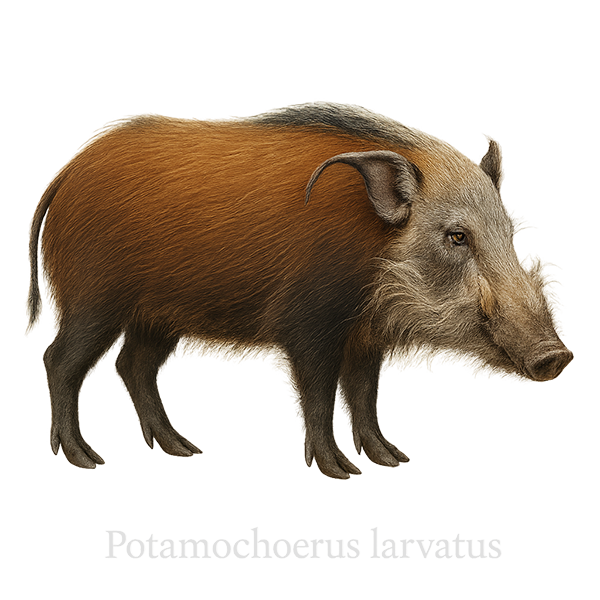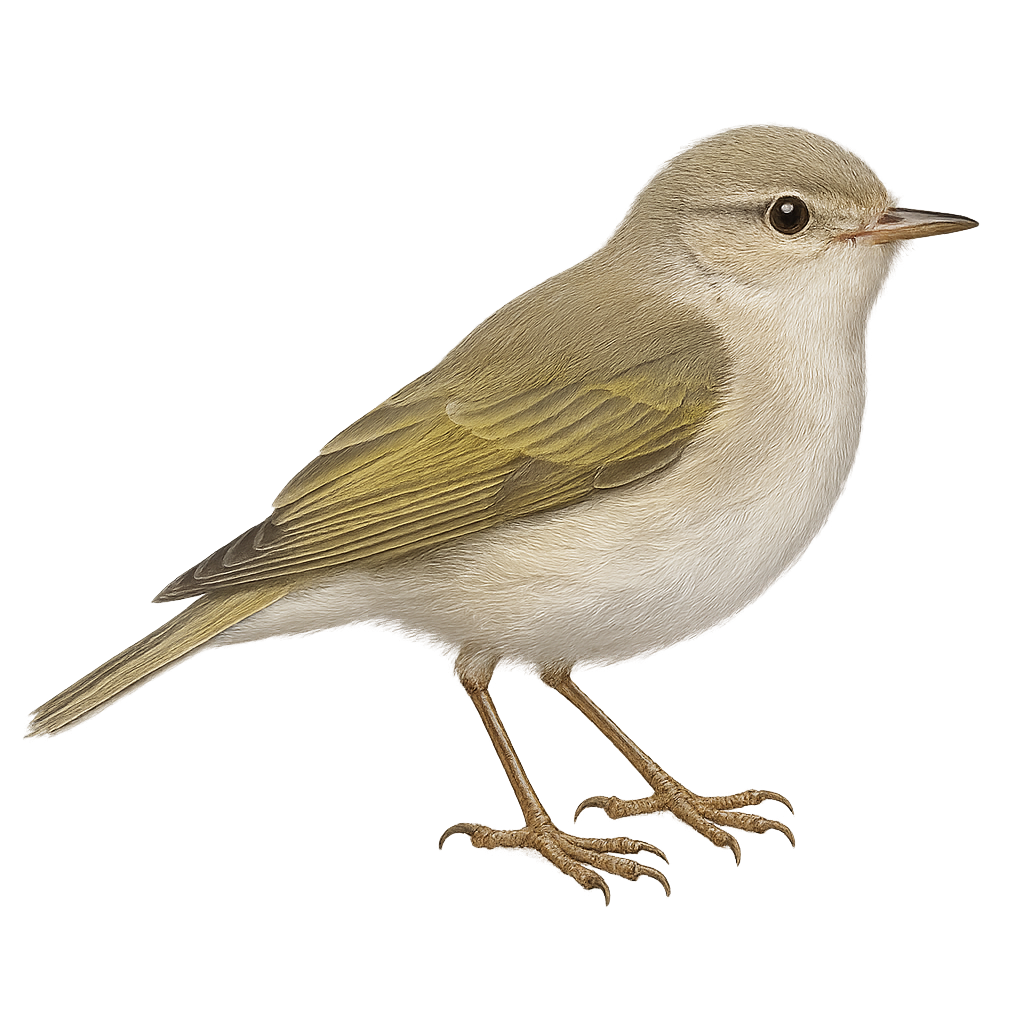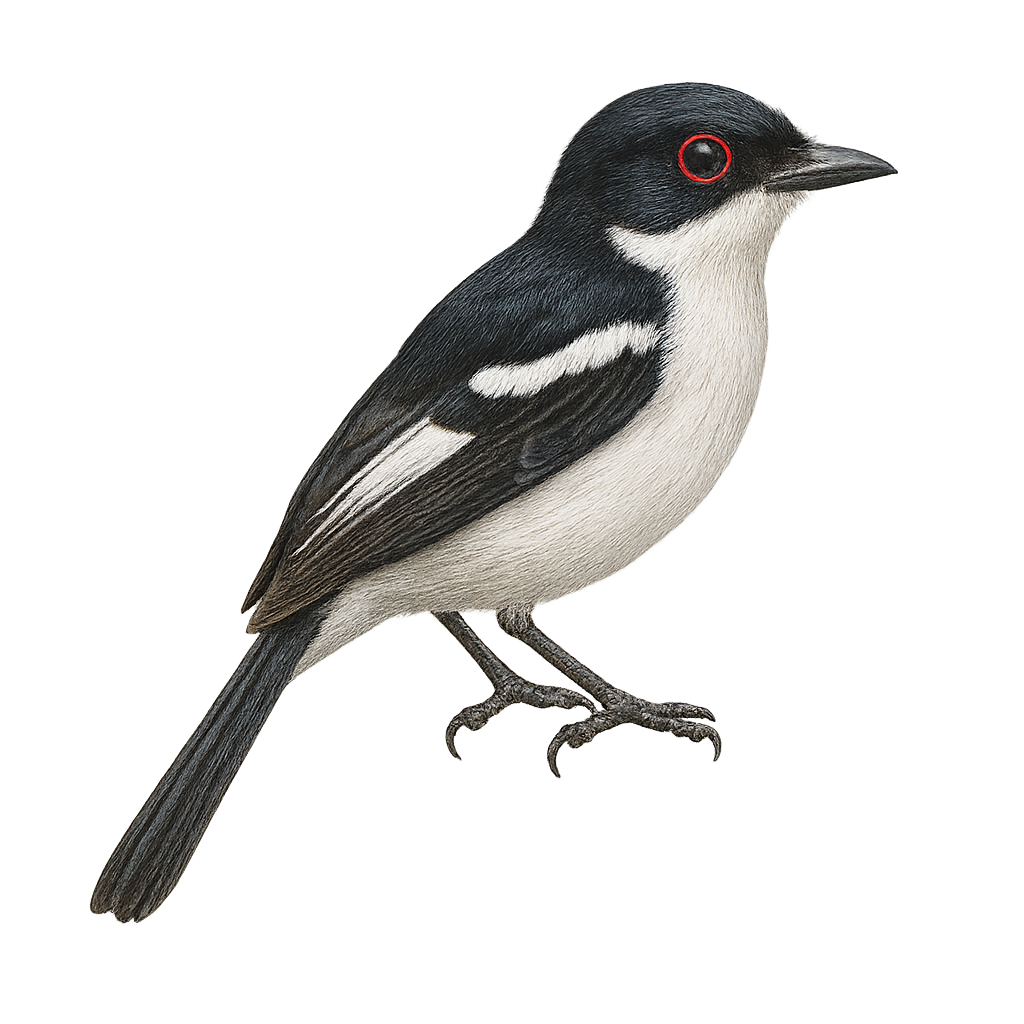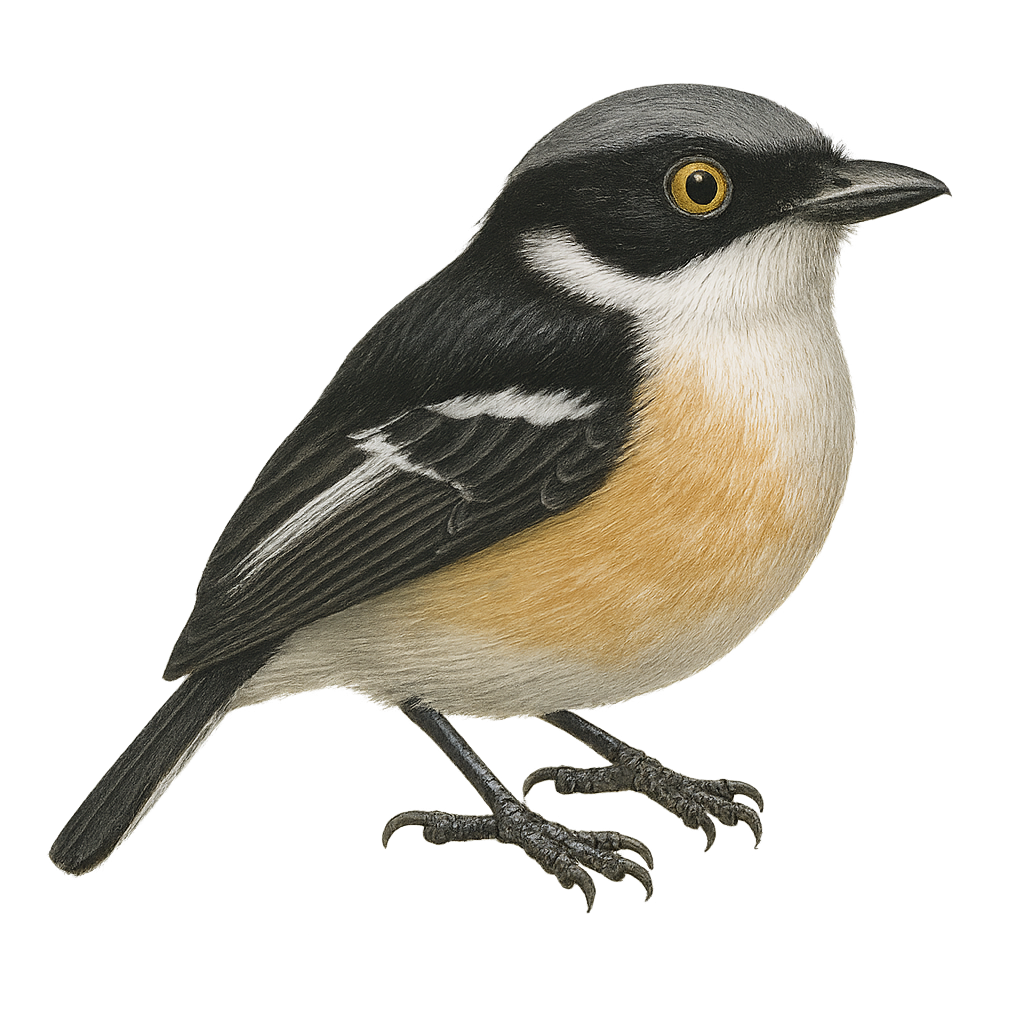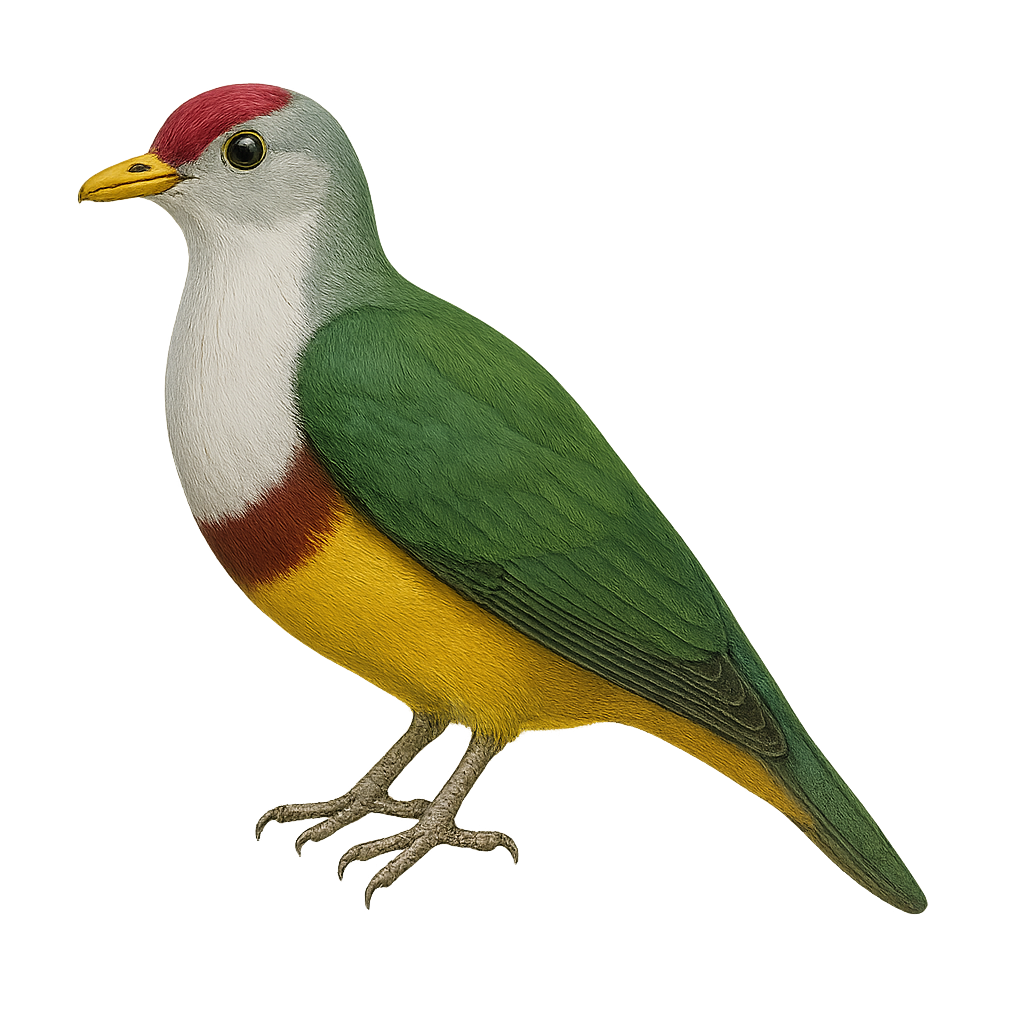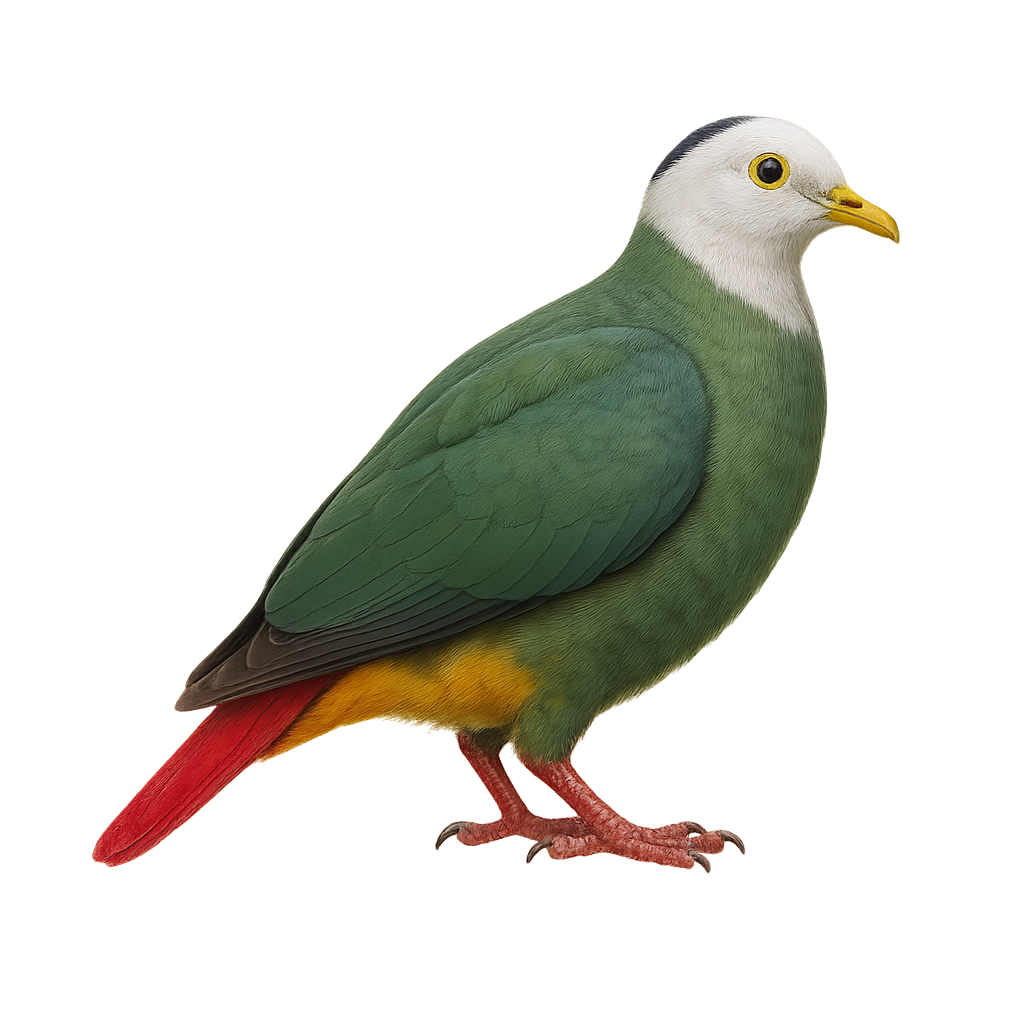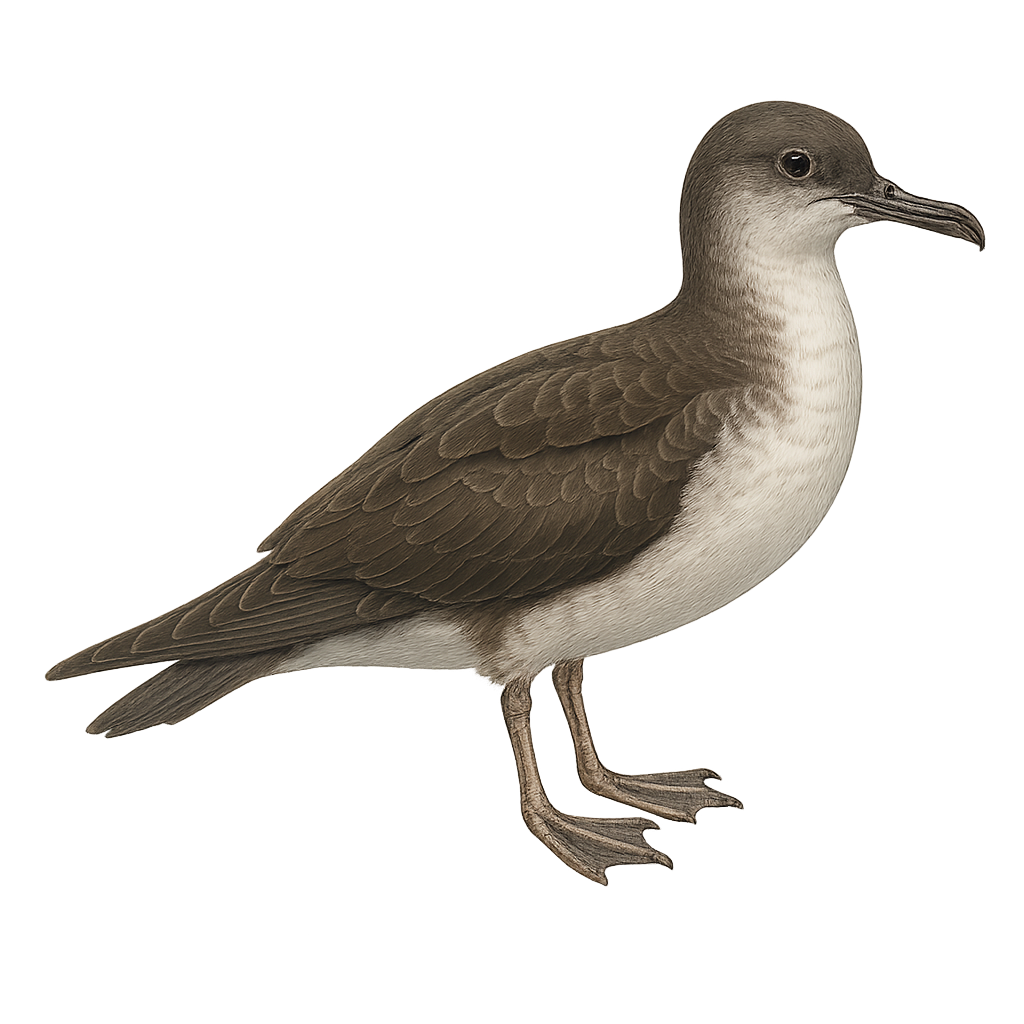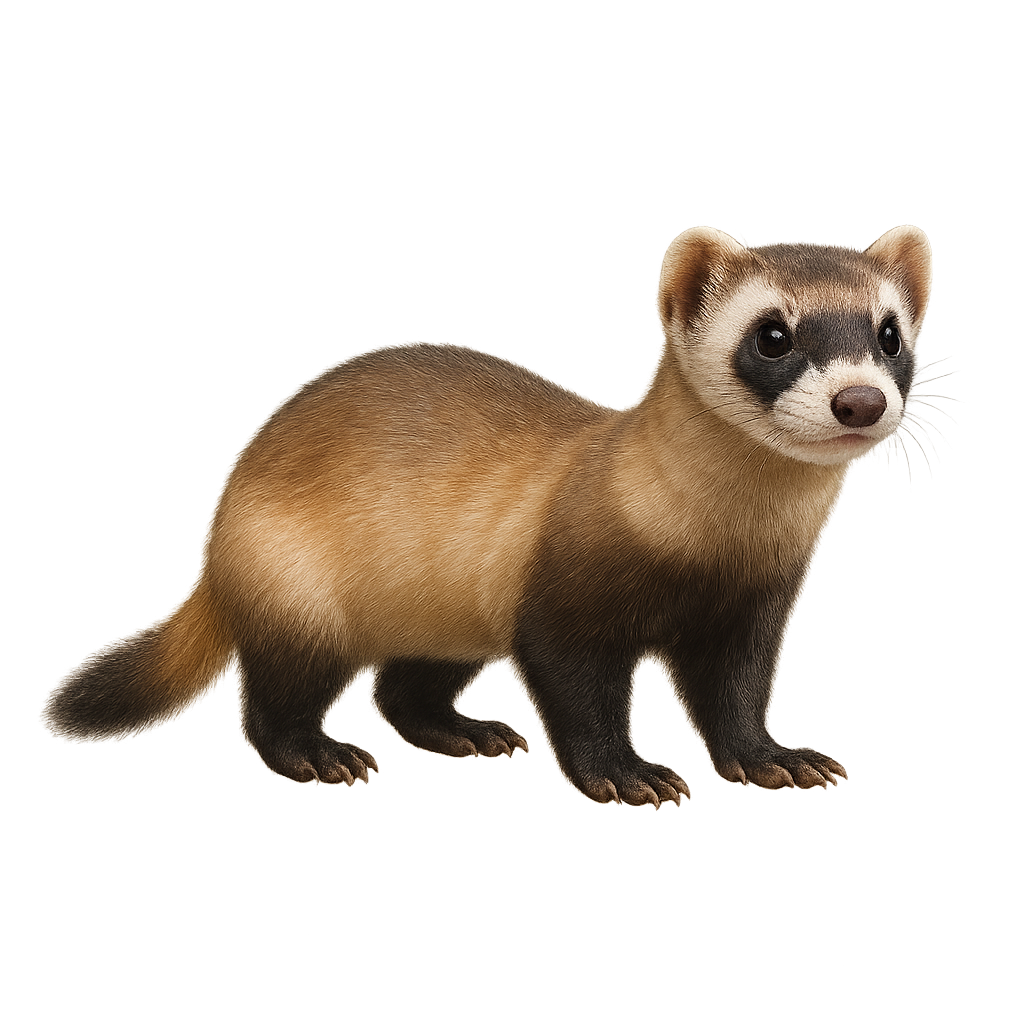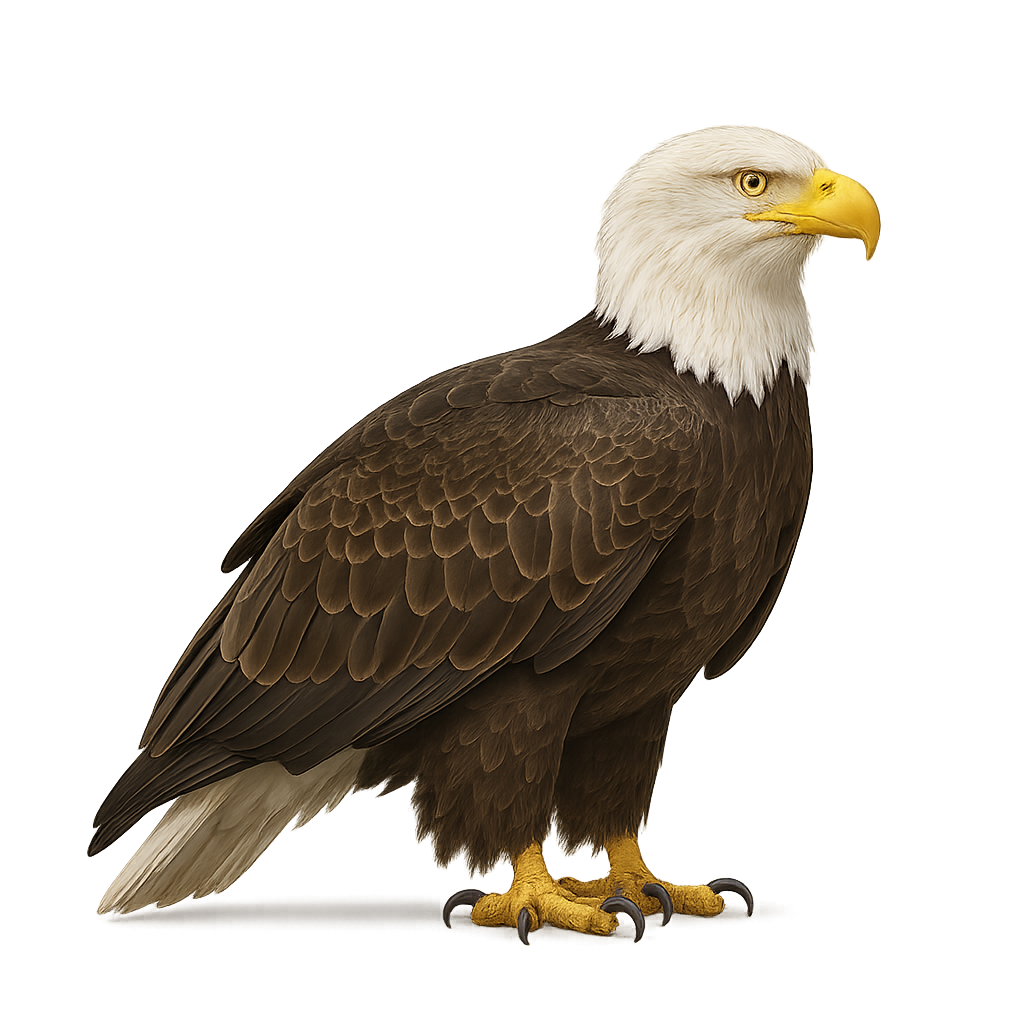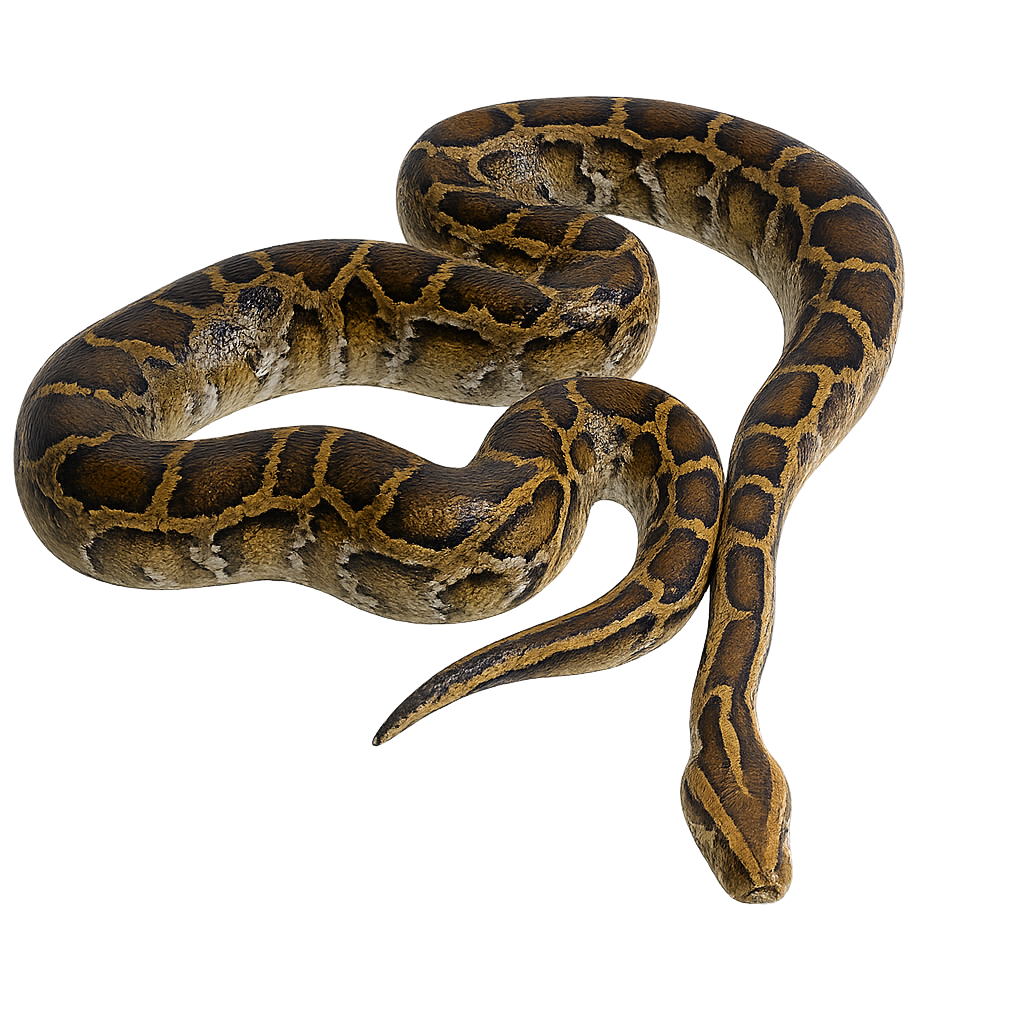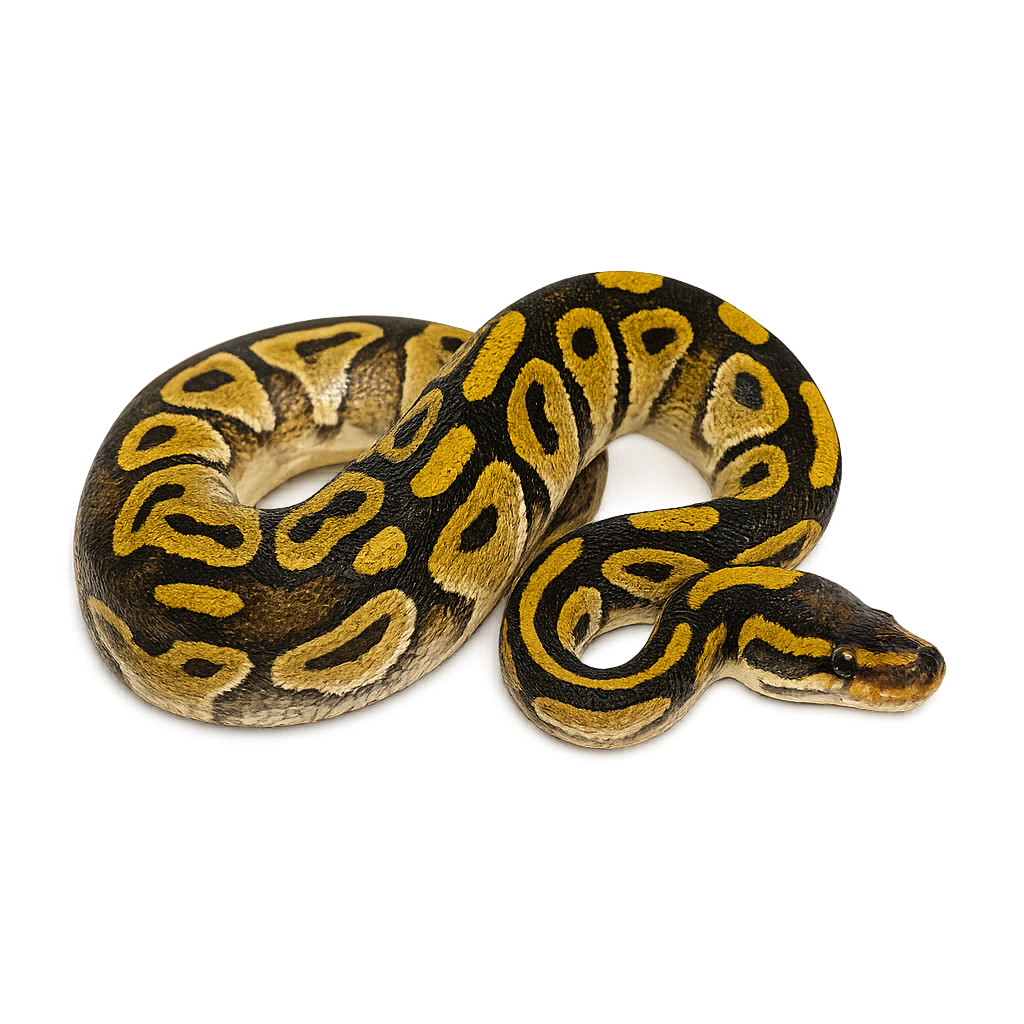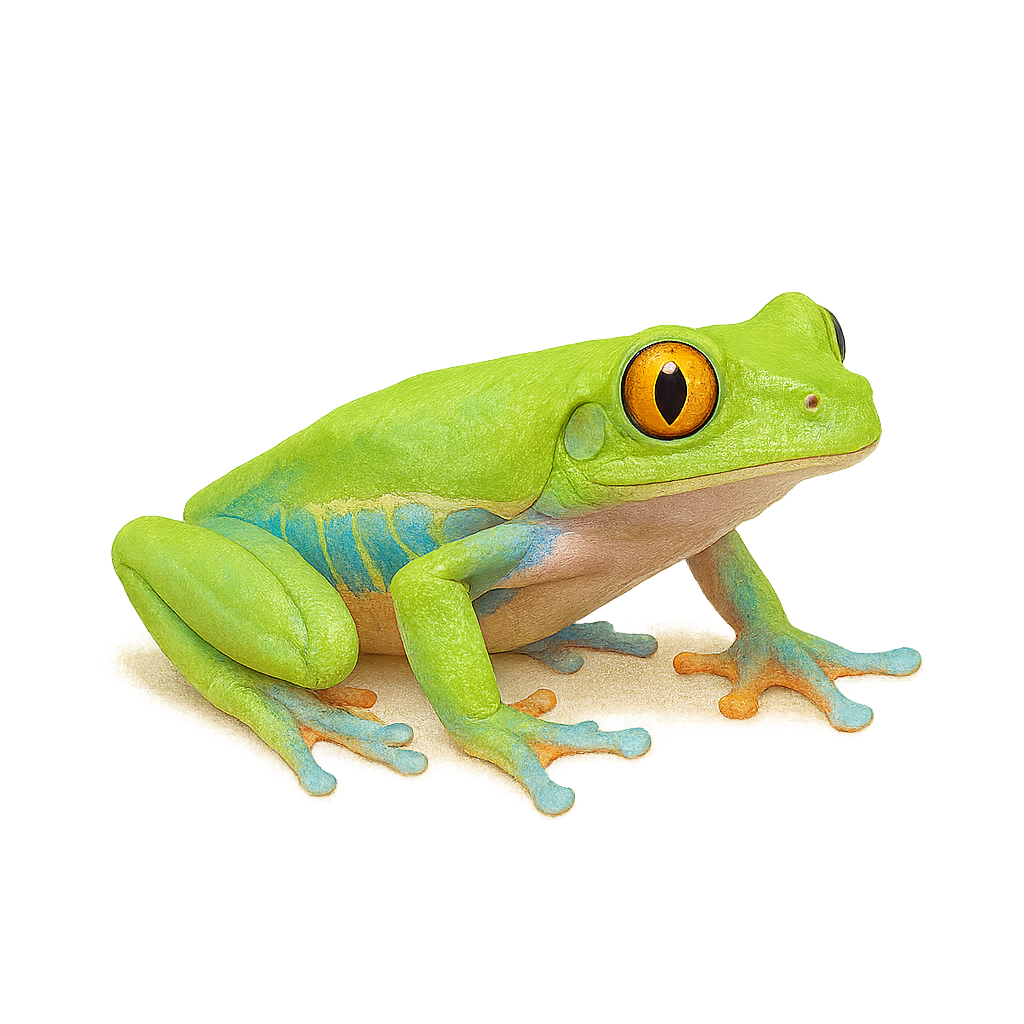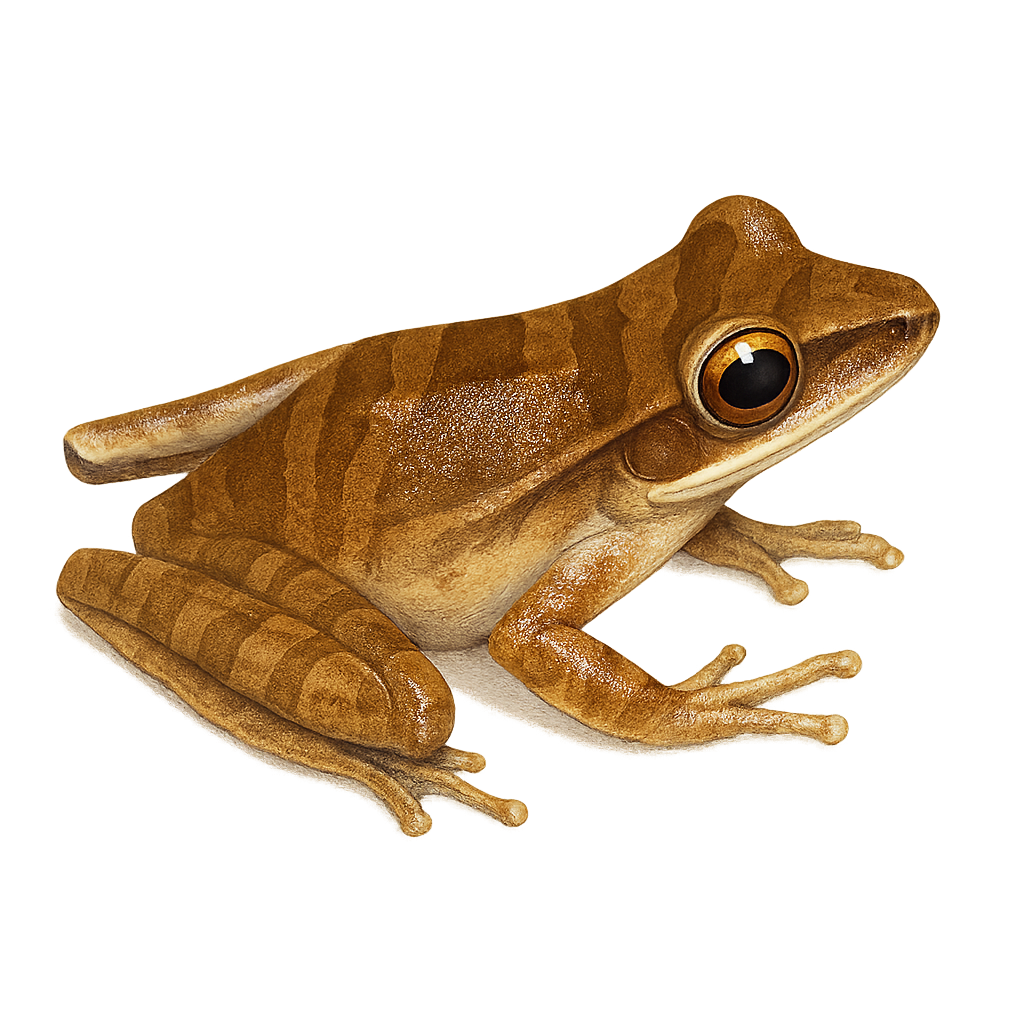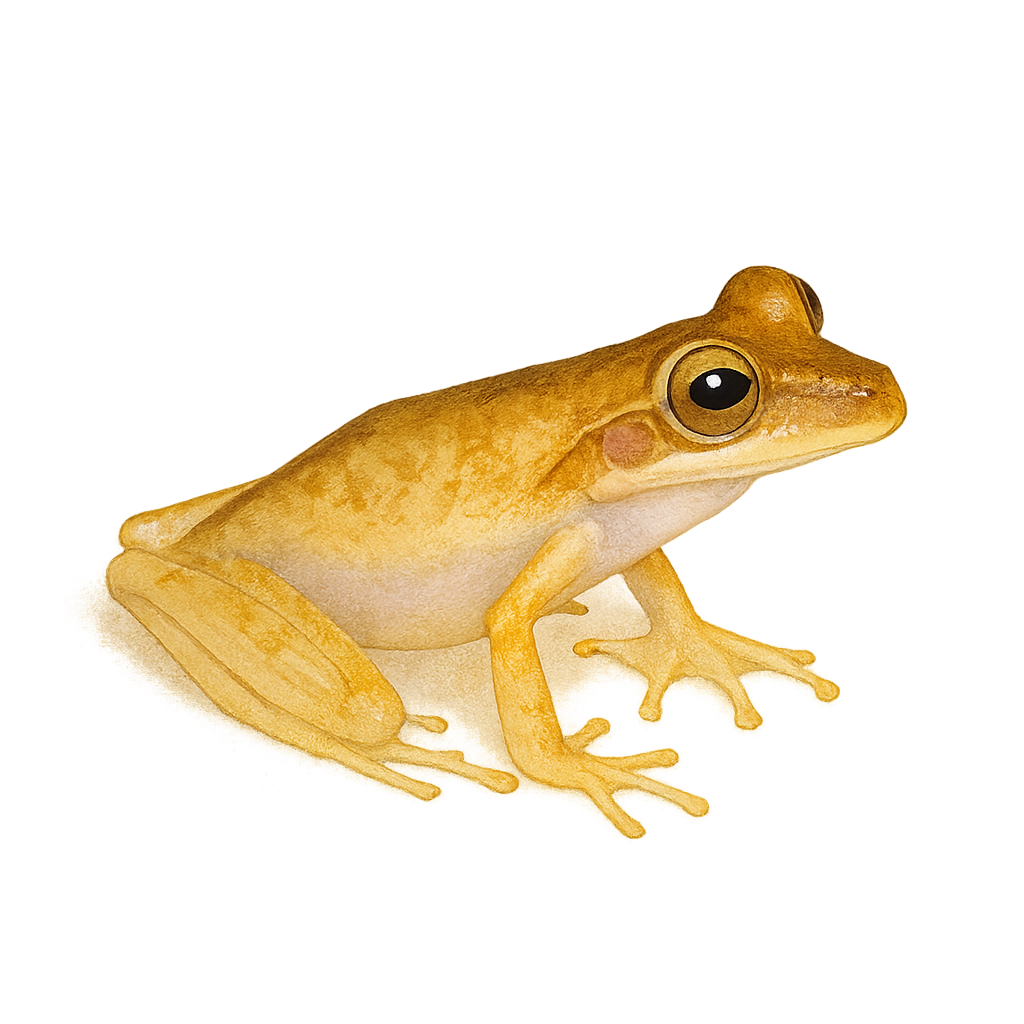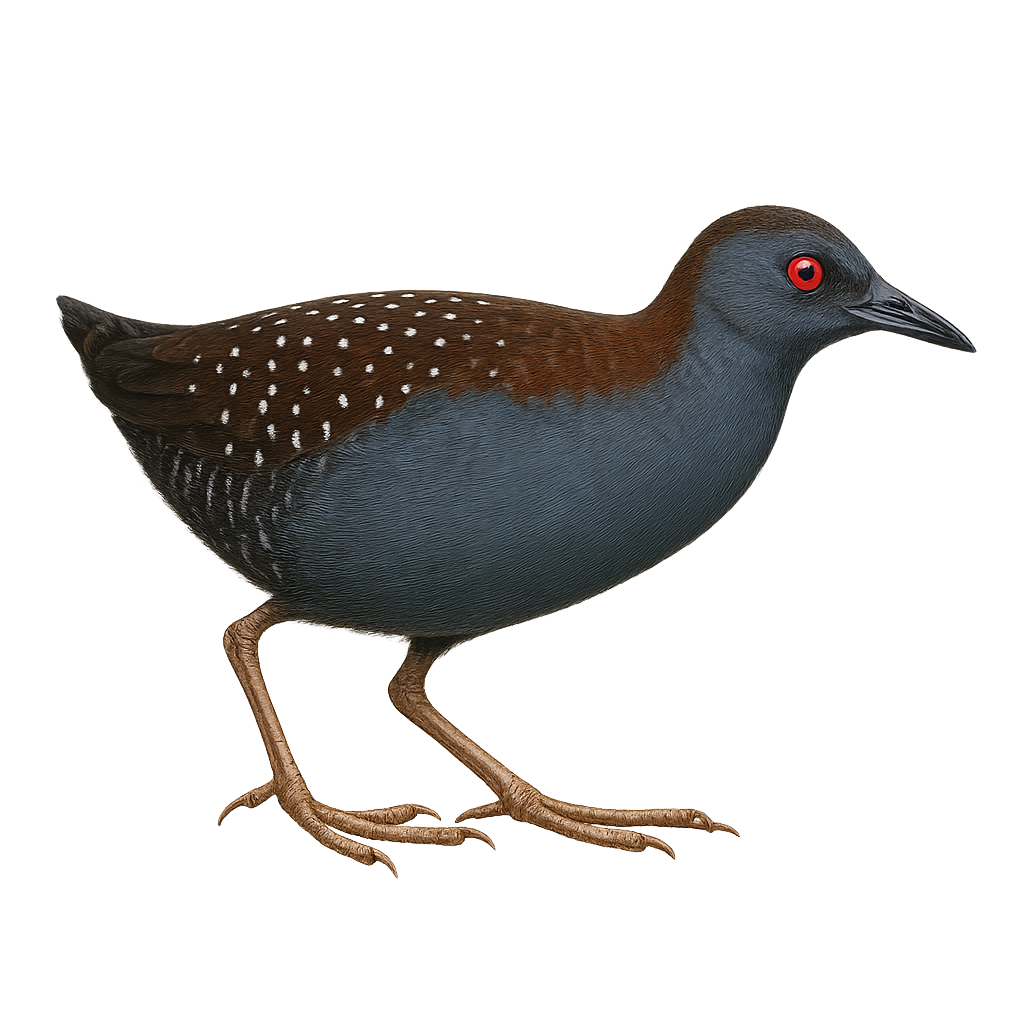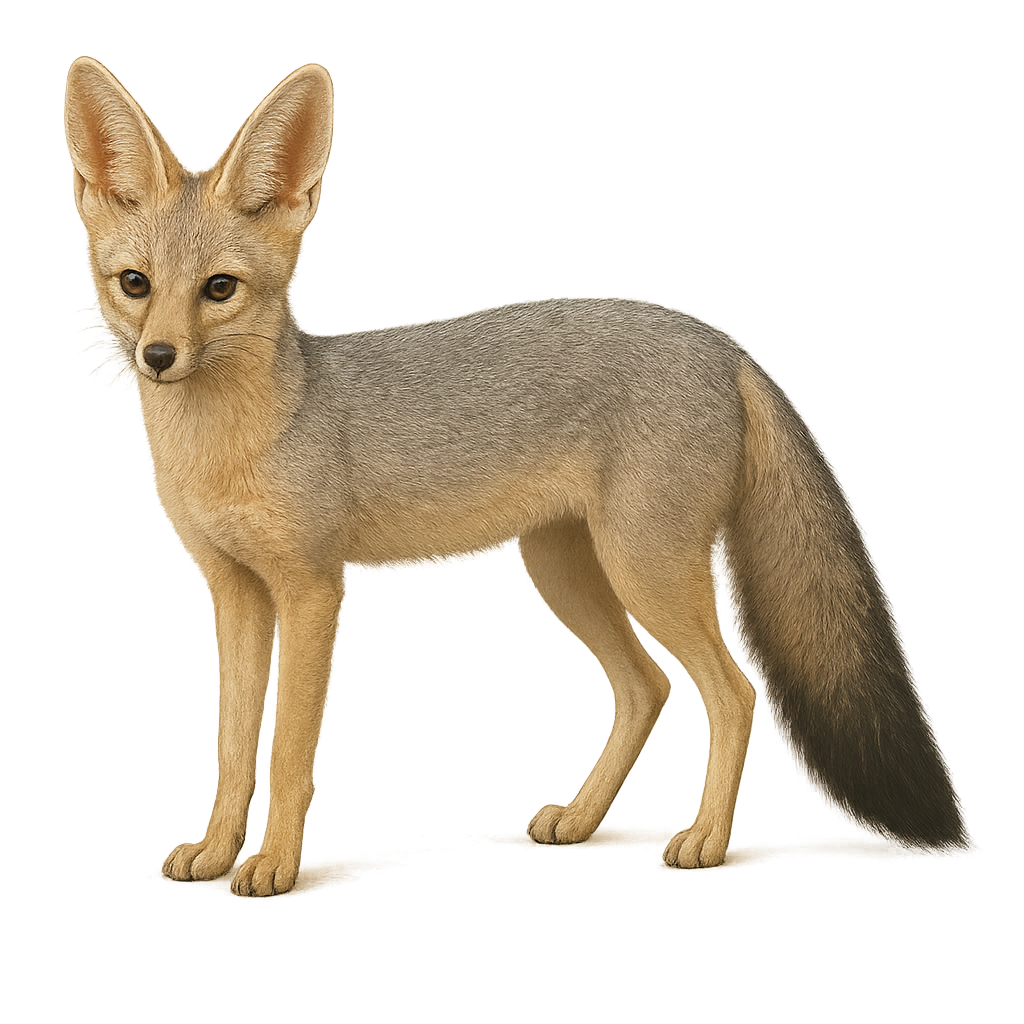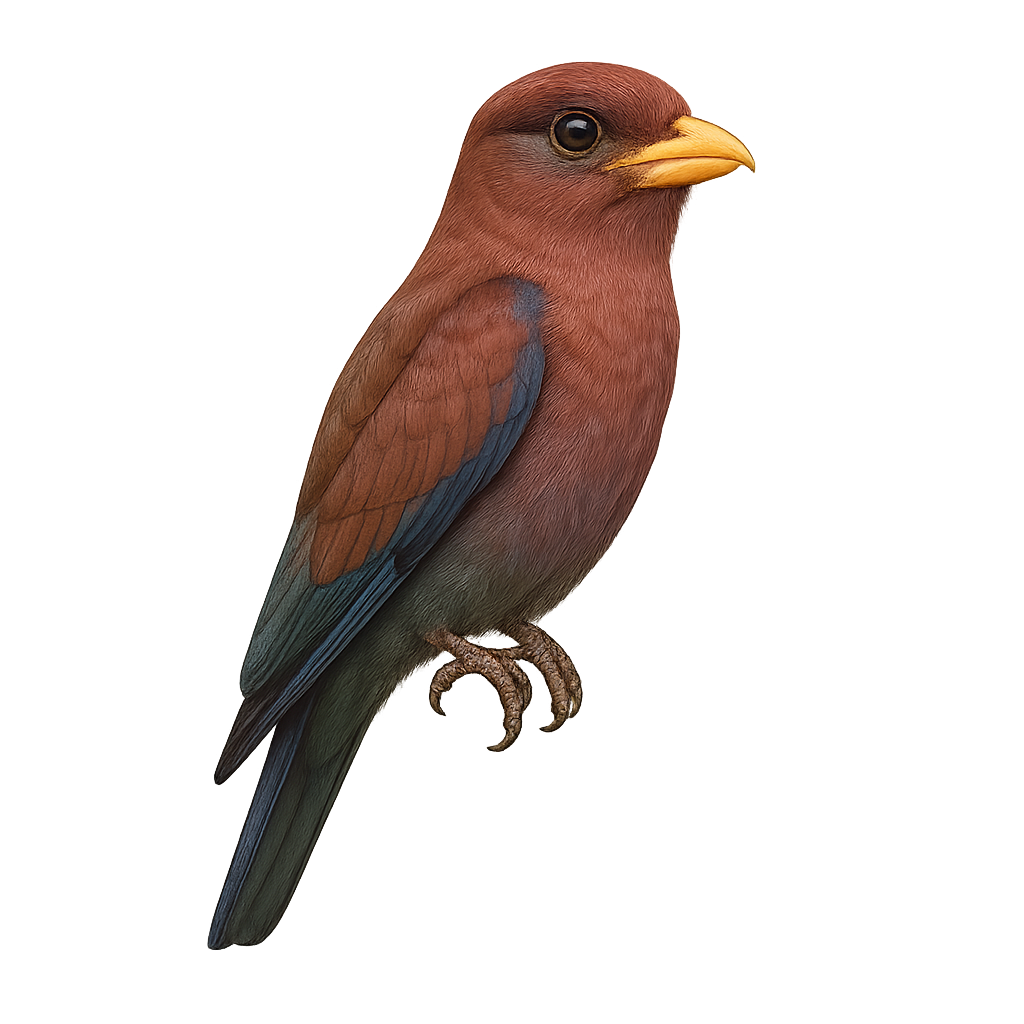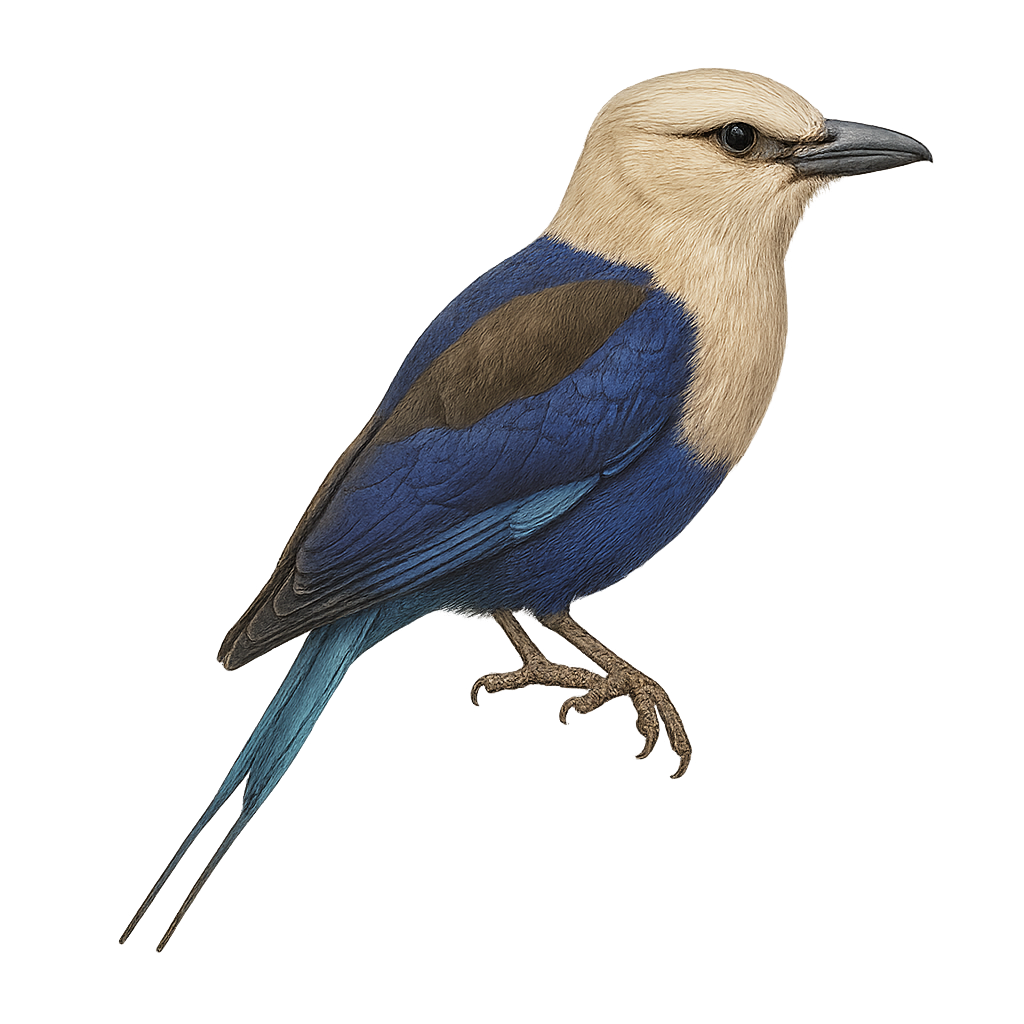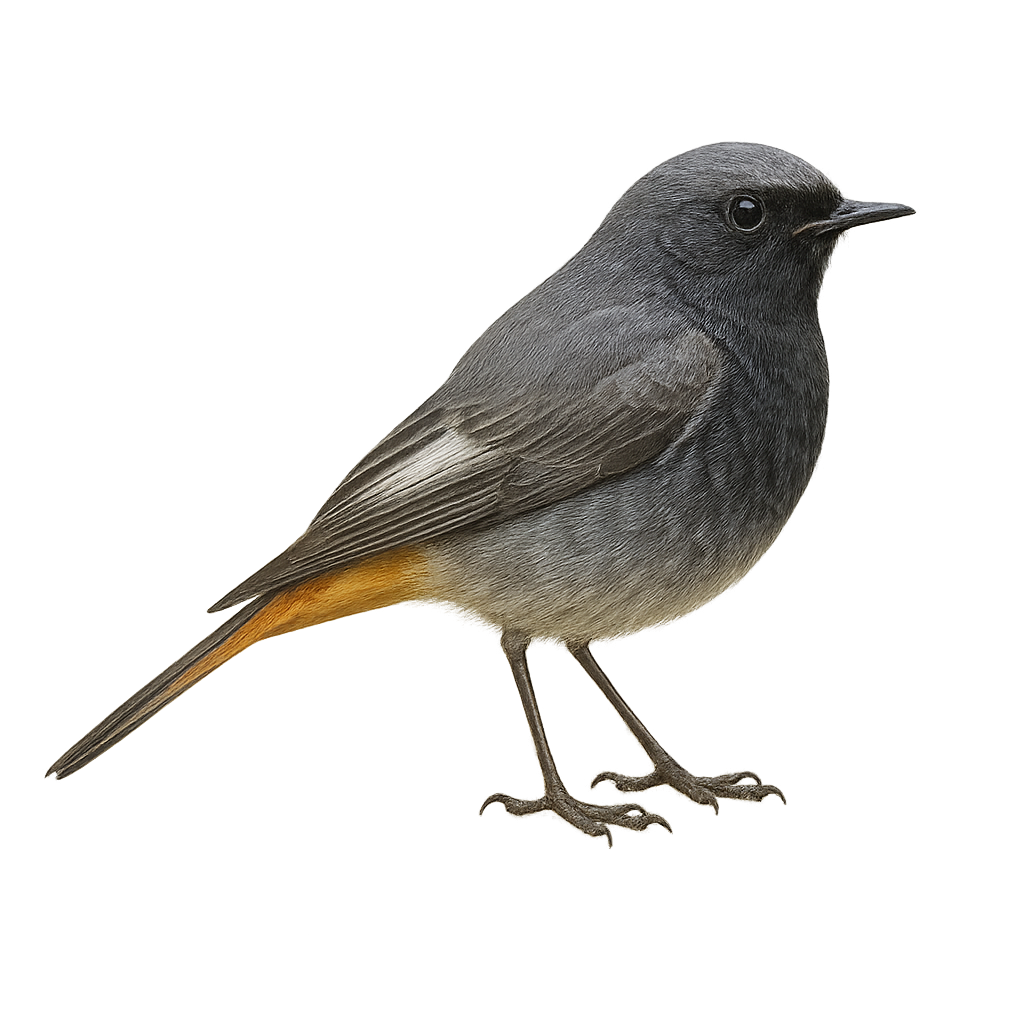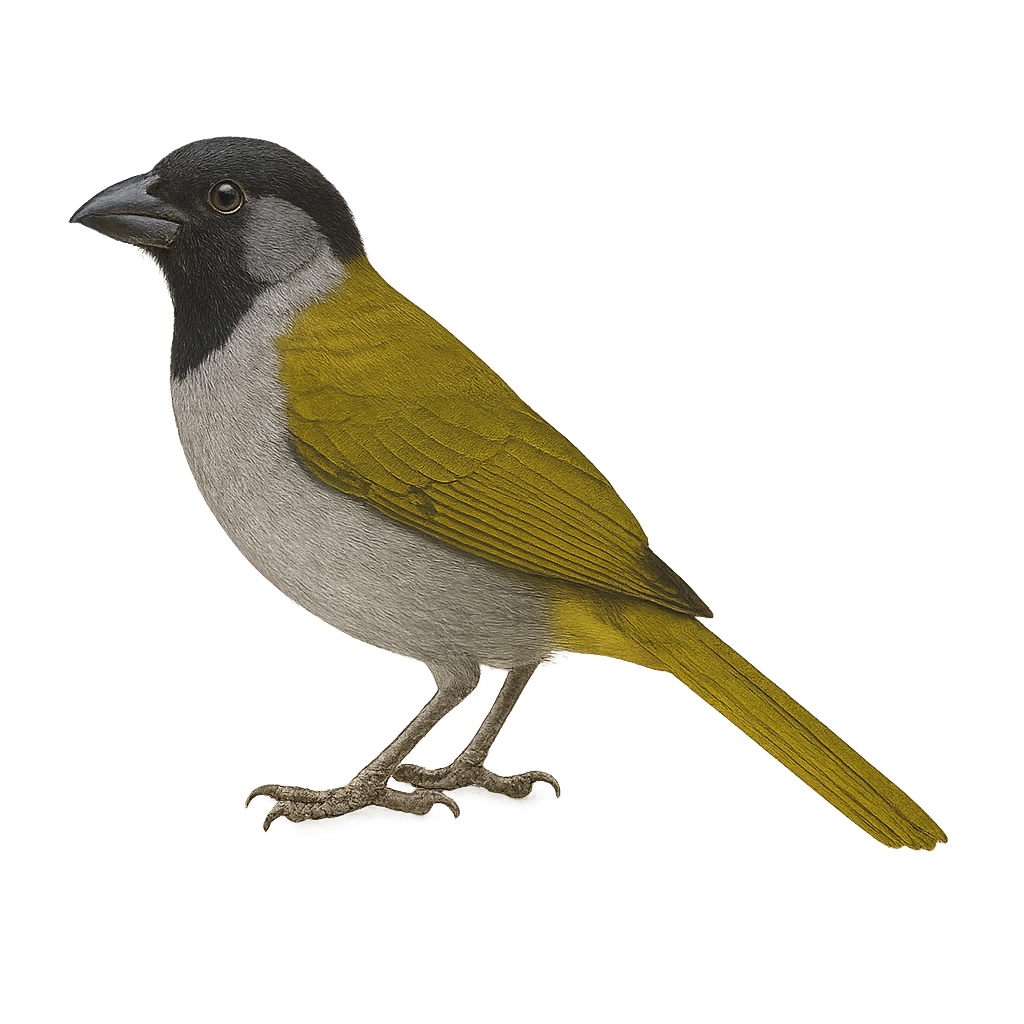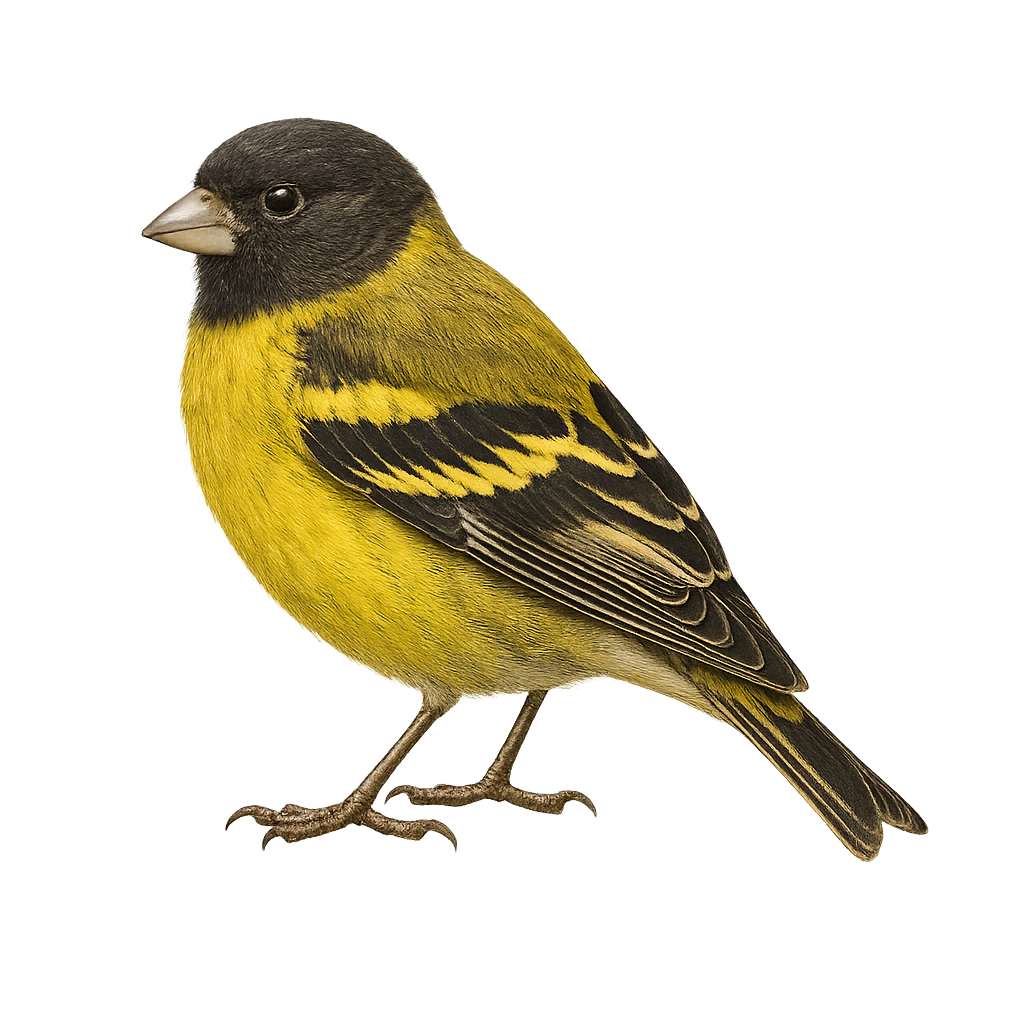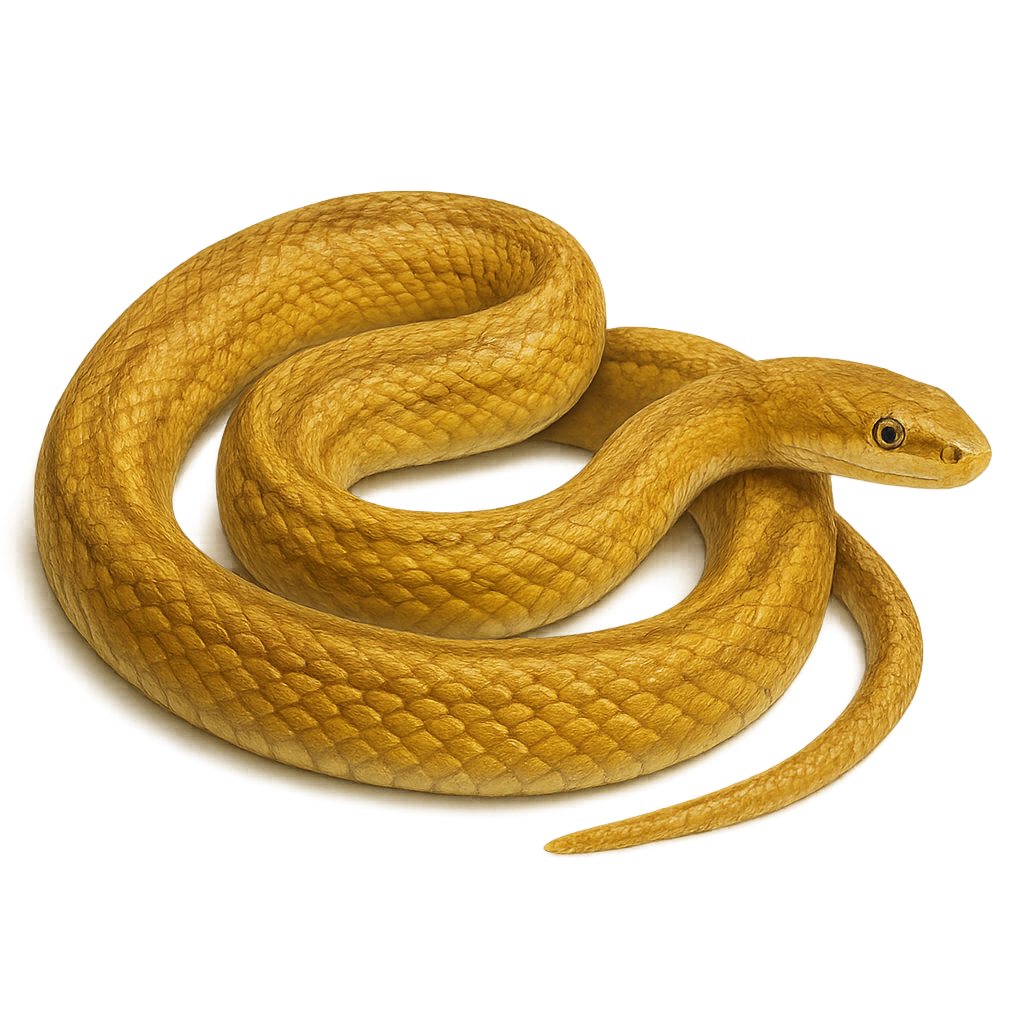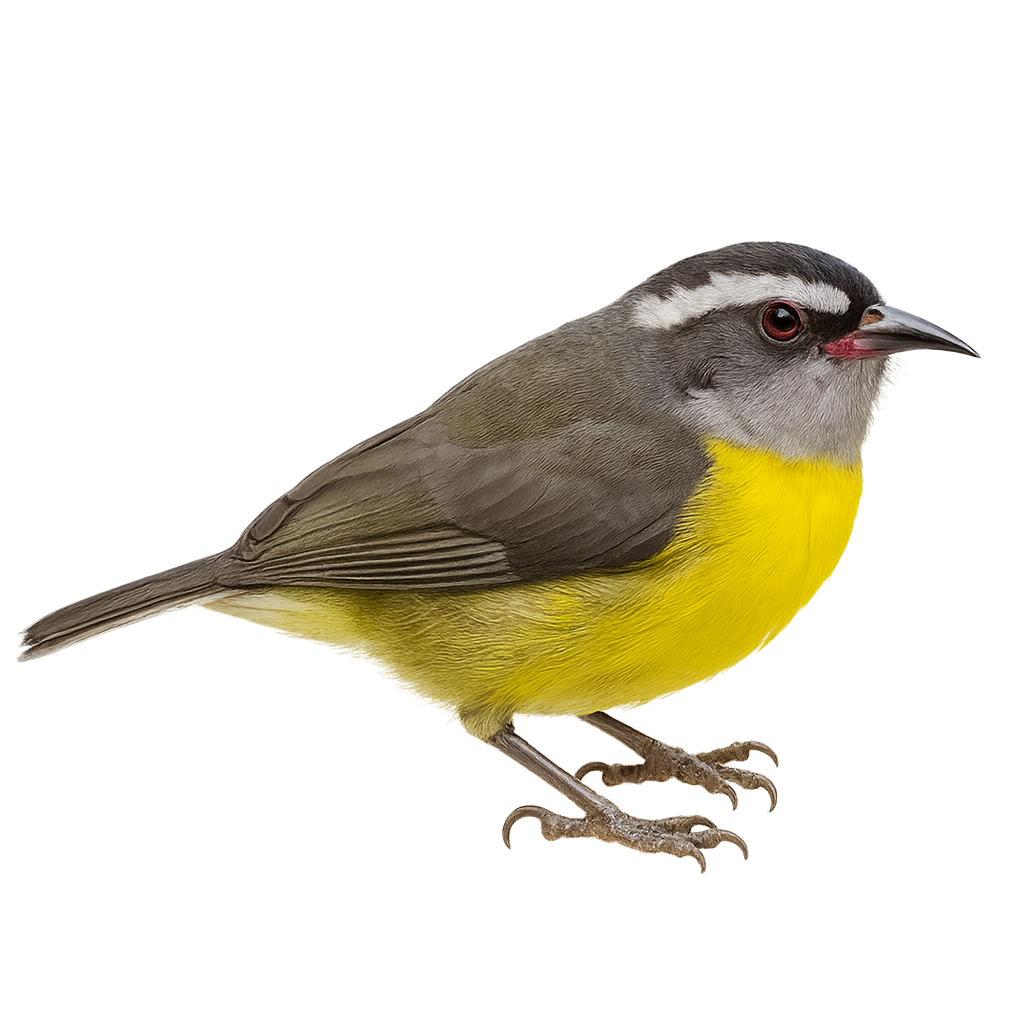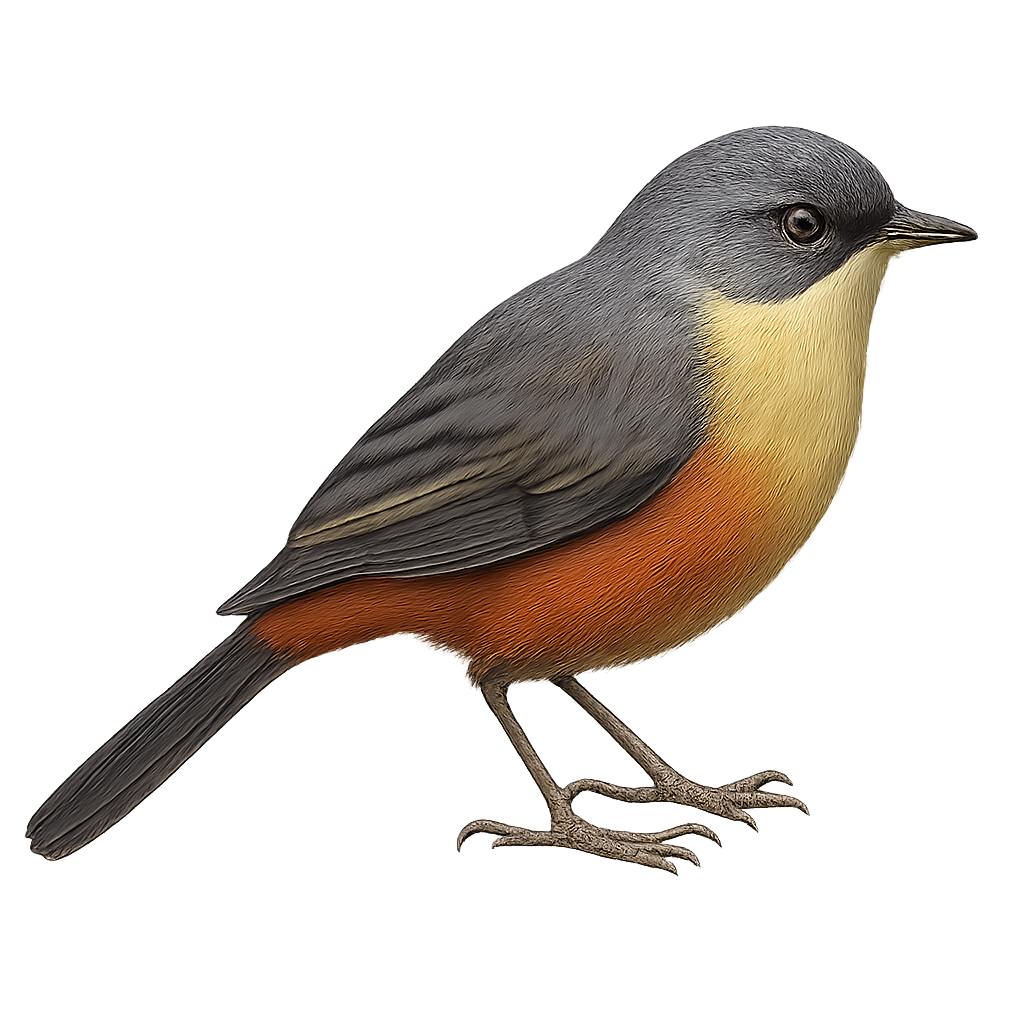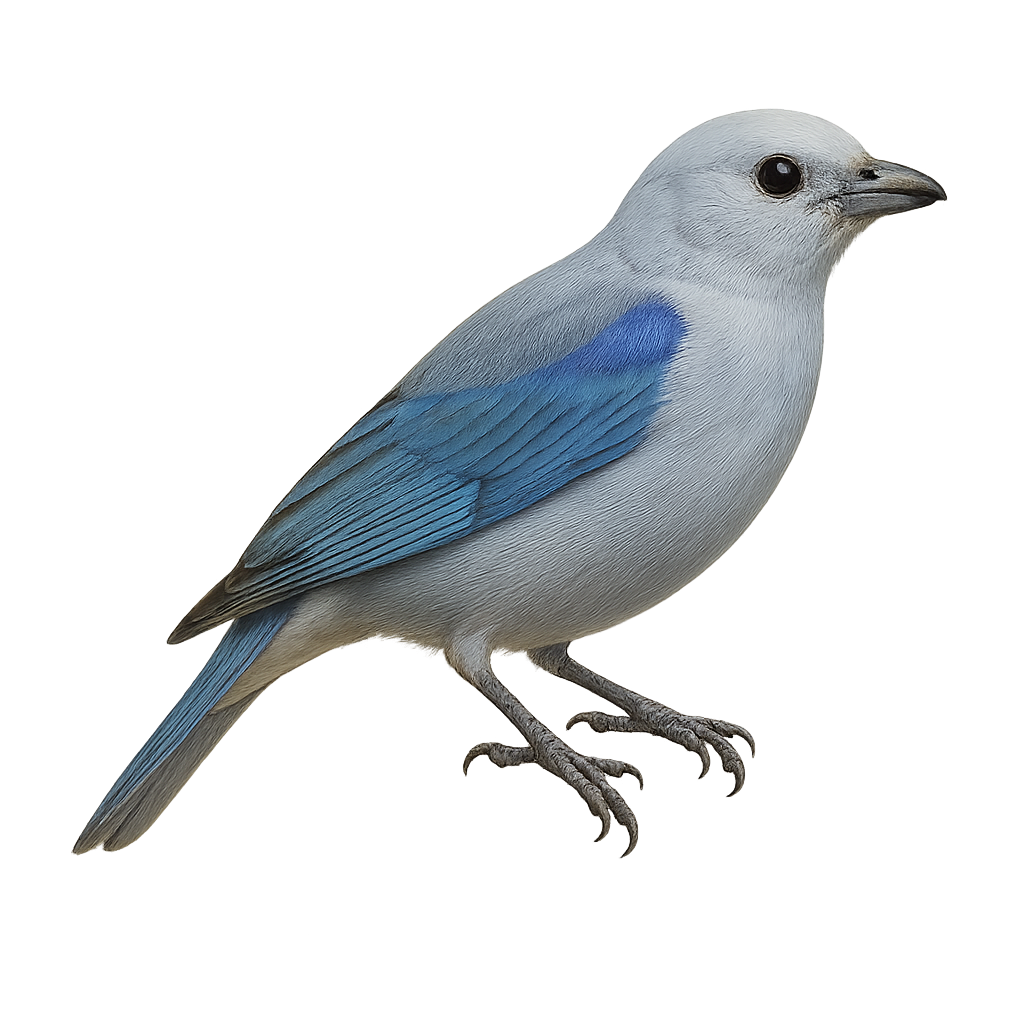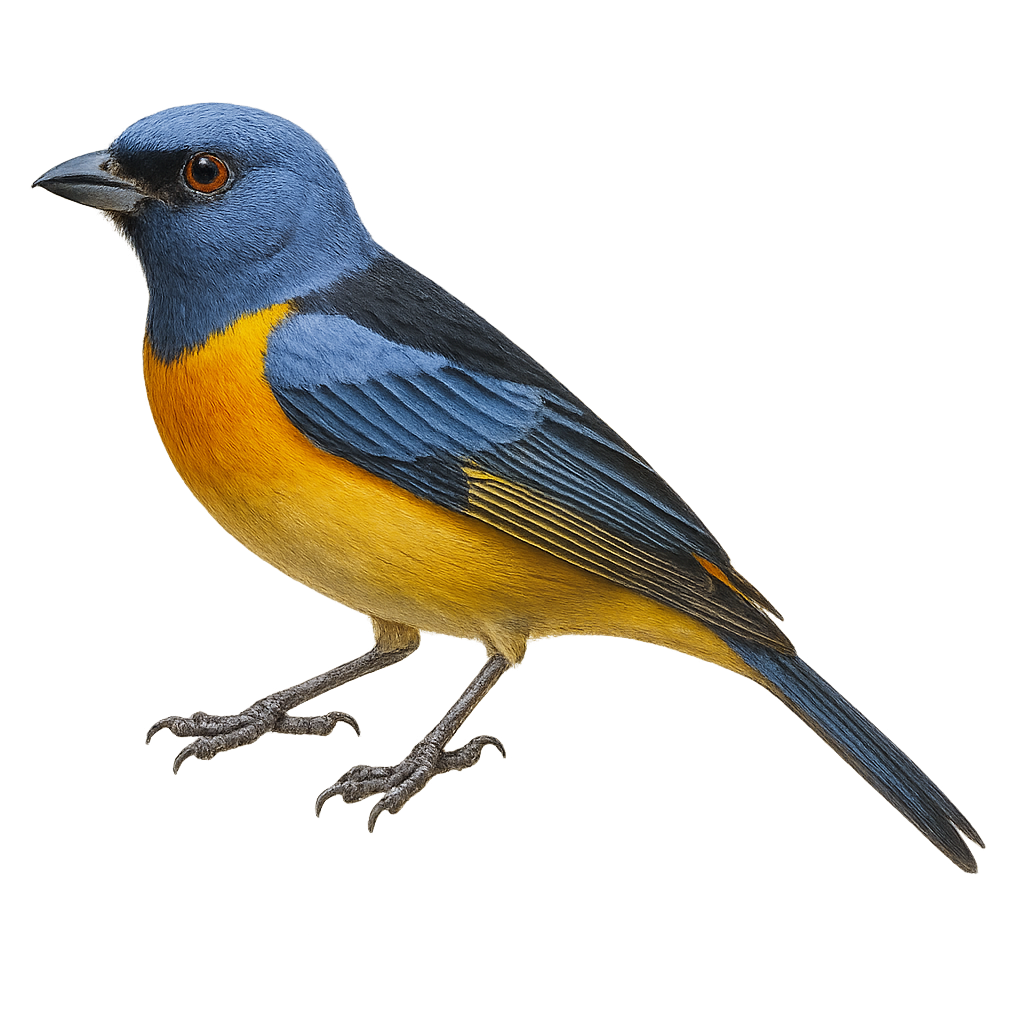The bushpig, or Potamochoerus larvatus, is a mammal from the Suidae family, recognizable by its long-haired ears. It primarily inhabits forests, savannas, and wetlands in sub-Saharan Africa. This omnivorous suid feeds on roots, fruits, insects, and occasionally small animals. It lives in family groups and is known for its complex social behavior. Bushpigs are mainly nocturnal, making them difficult to observe. Their coat ranges from reddish-brown to black, with distinctive white facial markings. Although hunted for their meat, their population remains stable due to their adaptability.
The Bonelli's Warbler is a small songbird belonging to the Phylloscopidae family. It is mainly found in southern Europe and northern Africa. This passerine measures about 11 cm in length and weighs between 7 and 9 grams. Its plumage is primarily olive green on the upper parts and white on the underparts, with a distinctive pale wing bar. The song of the Bonelli's Warbler is a rapid, repetitive trill, often heard in oak and pine forests. It feeds mainly on insects and larvae, which it catches by flitting agilely among the branches. A migratory bird, it winters in sub-Saharan Africa before returning to Europe for the breeding season.
The Black-throated Wattle-eye, or Platysteira cyanea, is a small African bird with distinctive plumage. It features a black head contrasting with a white chest and gray back. Its eyes are surrounded by a reddish bare skin, adding to its unique appearance. This bird is primarily insectivorous, feeding on small insects caught in flight or on branches. It inhabits tropical forests and wooded savannas of sub-Saharan Africa, preferring dense areas where it can hide from predators. Known for its melodious songs, often heard at dawn and dusk, the Black-throated Wattle-eye is relatively common in its habitat but remains elusive and hard to spot.
The Brother's Batis is a small passerine bird belonging to the Platysteiridae family. It is mainly found in the forests and wooded savannas of East Africa, particularly in Tanzania and Kenya. This bird is characterized by its striking black and white plumage, with a distinctive black breast band. Males and females exhibit sexual dimorphism, with females having browner tones. The Brother's Batis is an active insectivore, often seen catching insects in flight or searching for them on branches. Its song plays a crucial role in territorial and courtship behaviors.
The Beautiful Fruit Dove, or Ptilinopus pulchellus, is a bird from the Columbidae family, known for its striking and colorful plumage. It displays a vibrant mix of green, yellow, and red hues, making it particularly attractive. This bird is primarily arboreal and feeds on fruits, playing a crucial role in seed dispersal in its natural habitat. It is endemic to the tropical forests of New Guinea, where it prefers dense and humid areas. Although its conservation status is currently "least concern," deforestation and habitat loss pose potential threats to its population.
The Black-naped Fruit Dove is a medium-sized bird, measuring about 24 cm in length. It is notable for its colorful plumage, with a black head contrasting against its bright green body. The wings show shades of yellow and blue, while the underside is paler. This bird is primarily frugivorous, feeding on various fruits and berries. It is often seen in small groups in humid tropical forests, where it plays a crucial role in seed dispersal. Although generally discreet, its soft and melodious call can be heard through the canopy. The Black-naped Fruit Dove is a resilient bird, capable of adapting to different habitats, but remains vulnerable to deforestation.
The Buller's Shearwater, or Ardenna bulleri, is an elegant and graceful seabird primarily observed in the Pacific Ocean. It is distinguished by its silvery-gray plumage on the back and white on the belly, with long, slender wings that allow it to glide effortlessly over the waves. This migratory bird travels great distances between its breeding grounds in New Zealand and its feeding areas in the North Pacific. It nests in colonies on isolated islands, digging burrows in the ground to lay its eggs. The Buller's Shearwater feeds mainly on fish and squid, which it captures by skillfully diving into the water. Although its conservation status is concerning due to threats to its nesting habitats, conservation efforts are underway to protect this fascinating bird.
The Balearic Shearwater, Puffinus mauretanicus, is a seabird endemic to the Balearic Islands. It is characterized by its dark brown plumage on top and lighter underneath, with long, narrow wings adapted for gliding over waves. Measuring about 30 to 40 cm in length with a wingspan of 75 to 90 cm, it is perfectly adapted to life at sea. This bird primarily feeds on fish and cephalopods, which it captures by diving underwater. Unfortunately, the Balearic Shearwater is critically endangered due to predation by introduced species, marine pollution, and overfishing, which reduces its food resources.
The black-footed ferret, or Mustela nigripes, is a rare and iconic small carnivore of the North American prairies. It is distinguished by its light beige fur, black feet, and facial mask, as well as its slender body and bushy tail. This mustelid is a specialized predator, primarily feeding on prairie dogs. Unfortunately, it is critically endangered due to habitat loss and disease. Conservation efforts, including captive breeding and reintroduction into the wild, are crucial for its survival. The black-footed ferret is a symbol of prairie biodiversity and the importance of ecosystem conservation.
The Bald Eagle is a large raptor primarily found in North America, near bodies of water such as lakes, rivers, and coastal areas. It measures about 70 to 90 cm in length, with a wingspan of 1.8 to 2.3 meters, and weighs between 3 and 6 kg. Its plumage is primarily dark brown with characteristic white head and tail. The Bald Eagle is an excellent hunter, primarily feeding on fish, small mammals, and birds, which it captures by diving or snatching its prey with powerful talons. Although its population once faced a significant decline and was threatened, particularly due to pollution and hunting, the Bald Eagle is now a protected species, and its population has greatly recovered.
The Burmese python is a large constrictor snake reaching 5–7 m in length, with a heavy body covered in brown scales patterned with darker blotches. Native to Southeast Asia, it inhabits wetlands, swamps, and tropical forests, preying on mammals and birds. Solitary and primarily nocturnal, it can submerge itself to hunt aquatic prey. During the breeding season, the male actively seeks the female and coils around her prior to egg-laying.
The Ball python, or Python regius, is a constrictor snake native to West and Central Africa. It is favored for its modest size, typically measuring between 90 and 120 cm as an adult, although some specimens can reach 150 cm. Its skin features patterns of dark brown and black spots on a light brown or golden background, providing effective camouflage in its natural habitat. This snake is primarily nocturnal and prefers humid environments such as savannas, forests, and grasslands. In captivity, it is prized for its docile temperament and ease of care, making it a popular choice among reptile enthusiasts.
The Blue-sided Treefrog, or Agalychnis annae, is a tree-dwelling frog species native to the humid tropical forests of Costa Rica. It is easily recognizable by its bright red eyes, vivid green body, and blue sides. This frog is primarily nocturnal, resting on leaves during the day. It plays a crucial role in the ecosystem as an insect predator. Unfortunately, it is threatened by deforestation and habitat loss. Conservation efforts are essential to ensure its survival. Its thin, permeable skin makes it sensitive to environmental changes, making it an important indicator of habitat health.
The Basin treefrog, or Boana lanciformis, is an amphibian species in the Hylidae family. It is primarily found in the humid tropical forests of South America, particularly in Brazil, Colombia, and Venezuela. Its green and brown coloration allows it to blend effectively among foliage. It has a slender body and long legs, adapted for arboreal life. The Basin treefrog is nocturnal and primarily feeds on insects. It plays a crucial role in the ecosystem by regulating insect populations. Although its habitat is threatened by deforestation, it is currently classified as "least concern" by the IUCN.
The Basin tree frog, scientifically known as Hypsiboas lanciformis, is a species of arboreal frog native to the humid tropical forests of South America. It is characterized by its slender body and long limbs, which allow it to move nimbly among the trees. Its coloration ranges from green to brown, providing excellent camouflage among the foliage. This species is primarily nocturnal, feeding on insects and other small invertebrates. It plays a crucial role in the ecosystem by controlling insect populations. Although its conservation status is currently stable, deforestation poses a potential threat to its natural habitat.
The Black Rail is a small, elusive bird known for its secretive nature and rarity. It measures about 10 to 15 cm in length and weighs between 30 and 40 grams. Its plumage is primarily black with shades of gray and brown, and it has distinctive red eyes. This rail prefers freshwater marshes and wet grasslands, where it primarily feeds on insects, small crustaceans, and seeds. It is often heard rather than seen, emitting sharp, piercing calls. Its population is declining due to habitat loss and predation, making it a conservation concern.
The Blanford's fox, or Vulpes cana, is a small canid primarily inhabiting the arid and mountainous regions of the Middle East. It is distinguished by its modest size, measuring about 40 cm in length, with a bushy tail almost as long as its body. Its fur is generally gray with shades of brown, allowing it to blend into its rocky environment. This fox is mainly nocturnal, helping it avoid the high daytime temperatures. It is omnivorous, feeding on small mammals, insects, fruits, and occasionally carrion. Although relatively unknown, it plays a crucial role in its ecosystem by regulating prey populations and dispersing seeds.
The Black Rhinoceros is a large species of rhinoceros primarily found in East and Southern Africa, notably in Kenya, Tanzania, Namibia, and South Africa. It measures about 3.5 to 4 meters in length, with a tail of 50 to 70 cm, and weighs between 800 and 1,400 kg. This rhinoceros is distinguished by its black skin (although some specimens may be gray) and its two horns located on its nose. Unlike the White Rhinoceros, it has a more pointed mouth, adapted for eating bushes and trees. The Black Rhinoceros is primarily herbivorous, feeding on leaves, fruits, twigs, and tree bark. While its population has long been threatened by poaching and habitat loss, conservation efforts have helped stabilize its population, although it remains critically endangered.
The Broad-billed Roller, or Eurystomus glaucurus, is a colorful and fascinating bird primarily found in sub-Saharan Africa. It is recognizable by its vibrant plumage, which combines shades of blue, green, and brown, and its characteristic broad bill. This bird measures about 29 cm in length and prefers open habitats such as savannas, light forests, and wooded areas. It is often seen perched on exposed branches, from where it surveys its territory. The Broad-billed Roller feeds mainly on insects, which it catches in flight with great agility. Its flight is fast and direct, often accompanied by acrobatic rolls.
The Blue-bellied Roller is a fascinating bird known for its vibrant plumage and dynamic behaviors. It features a bright blue belly contrasting with brown and black wings and head. This bird is often seen in the savannas and open forests of West and Central Africa. It primarily feeds on insects but also consumes small reptiles and fruits. The Blue-bellied Roller is a social bird, often seen in small groups or pairs. It is known for its impressive aerial acrobatics, especially during the breeding season. Although its habitat is threatened by deforestation, it remains relatively common within its range.
The black redstart is a small passerine bird found primarily in urban areas, gardens, rocky habitats, and steep slopes across Europe, Asia, and the Middle East. It is distinguished by its dark gray plumage, light belly, and orange-red tail. This small bird is especially known for its lively behavior and ability to adapt to human environments. It primarily feeds on insects and berries, which it finds in urban spaces or wooded areas.
The Black-headed Saltator is a medium-sized bird, measuring about 20 to 25 cm in length. It is easily recognizable by its black cap contrasting with its olive-green back and white belly. Its robust beak is well-suited for its diet, which mainly consists of fruits, seeds, and insects. It is primarily found in tropical and subtropical forests but can also inhabit wooded areas and gardens. This bird is known for its melodious and powerful song, often heard at dawn and dusk. It is usually seen alone or in pairs but can also join mixed-species flocks.
The Boat-billed Heron, or Cochlearius cochlearius, is a fascinating bird from the Ardeidae family. It is distinguished by its broad, spoon-shaped bill, ideal for capturing aquatic prey. This nocturnal heron primarily inhabits mangroves, swamps, and tropical rainforests in Central and South America. Its plumage is mainly gray with a black head adorned with a distinctive white crest. It measures about 50 cm in length with a wingspan of 76 to 86 cm. The Boat-billed Heron is a discreet bird, often difficult to observe due to its nocturnal habits. It feeds mainly on fish, crustaceans, and aquatic insects.
The Brown-winged Schiffornis is a discreet and mysterious bird, often difficult to spot in its natural habitat. It is characterized by its olive-brown plumage, which allows it to blend seamlessly into the dense undergrowth of tropical forests. This bird is primarily insectivorous, feeding on various insects and spiders it captures in the foliage. It is also known for its melodious, albeit discreet, song that resonates through the canopy. The Brown-winged Schiffornis is a solitary bird, but it can sometimes be seen in small family groups. It plays an important role in the ecosystem by controlling insect populations and participating in seed dispersal.
The Black-headed Canary, or Serinus nigriceps, is a small seed-eating bird belonging to the Fringillidae family. It is primarily found in the arid and semi-arid regions of southwestern Africa, particularly in Namibia and South Africa. This canary is easily recognizable by its black head contrasting with its bright yellow body. It inhabits rocky areas, open savannas, and dry scrublands. Its song is melodious, consisting of trills and warbles. The Black-headed Canary is a social bird, often seen in small groups. It mainly feeds on seeds but may occasionally consume insects.
Elaphe obsoleta, commonly known as the black rat snake, is a non-venomous snake native to North America. It is often found in forests, fields, and rocky areas. This snake is known for its ability to climb trees and swim. Its color ranges from black to dark brown, with a lighter belly. It can reach a length of 1.2 to 2.4 meters. It plays a crucial role in controlling rodent populations. Although it may appear intimidating due to its size, it is generally harmless to humans and prefers to flee rather than defend itself.
The Bananaquit, or Coereba flaveola, is a small songbird belonging to the Thraupidae family. It is easily recognizable by its black upperparts and bright yellow underparts, with a distinctive white stripe above the eye. This bird is widely distributed across the Caribbean, Central, and South America. It inhabits various environments, from tropical forests to urban gardens. The Bananaquit is an active and curious bird, often seen feeding on nectar, fruits, and insects. It uses its slender, curved bill to access flower nectar, playing a crucial role in pollination.
The Buff-throated Warbling Finch, Microspingus lateralis, is a bird from the Thraupidae family, primarily found in the subtropical and tropical moist forests of southeastern Brazil. It is recognizable by its distinctive plumage, with brown flanks, a white belly, and a gray head. This bird measures about 15 cm in length and feeds mainly on seeds and insects. It is often seen in small groups or pairs, actively moving through the canopy in search of food. Although its habitat is threatened by deforestation, it is currently classified as of least concern by the IUCN.
The Blue-gray Tanager is a medium-sized bird, about 18 cm in length. It is easily identifiable by its bright blue-gray plumage, with lighter shades on the belly and slightly darker wings. Its eyes are black, and it has a short, conical beak suited for its diet mainly consisting of fruits, but also insects. It is primarily found in tropical and subtropical forests, wooded areas, and urban gardens in Central and South America. Sociable by nature, it often lives in small groups and can be seen feeding in the canopy. Its presence is often marked by its melodious and repetitive song.
The Blue-and-yellow Tanager, Rauenia bonariensis, is a vibrant bird native to South America. It is easily identified by its striking blue back and bright yellow belly. This bird measures about 15 cm in length and weighs between 20 and 30 grams. It primarily inhabits subtropical and tropical moist forests, but can also be found in shrublands and gardens. The Blue-and-yellow Tanager is a social bird that feeds mainly on fruits, insects, and nectar. It is often seen in small groups or pairs. Its breeding season varies by region, but it is generally active during the warmer months.


